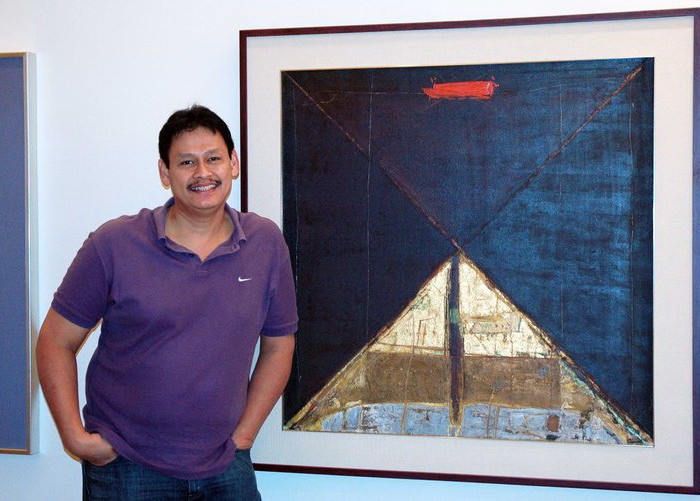I like finding out what drives them (artists) to create a particular piece, and I love hearing the stories behind their works.
What kind of exposure to art did you have in your childhood years?
My father used to like to draw. Mostly on paper, and he would either draw with whatever pen he had or sometimes with pastels. He loved old Indonesian painters, Raden Saleh and Realist painters who depicted landscapes and nature.
So your father was an influence for your current love of the arts?
Yes, he is a big part of it. And I still enjoy Realist paintings, especially the more “honest” side of it. Soedjojono’s works in my opinion are a good example of that. But I only got very much into art around the 1980s, when I was in university.
What was the first ever artwork you purchased?
The first artwork I bought was in 1995; it was a traditional Balinese painting.
What is art for you? Is it a passion, or merely an investment?
Well, I have always been into art. Now I can afford to collect art as a hobby and there is no denying that it is also an investment.
Have you noticed any changes in your tastes overtime?
Definitely. Maybe not changes, but there is certainly more variety in what catches my eye. I started noticing Cubism when I was in university. During that time I also started reading books about Balinese paintings so I understood them better. And I’ve always liked Realist paintings. Currently I am into contemporary artworks as they portray the “spirit of the times”.
How do you decide which artworks to purchase? Do you consult advisors, rely on the opinions of others or choose works purely on your own?
I buy the artworks which catch my eye. Usually once I “fall in love” with a piece, I try to purchase it. I like artworks which make me think and want to find out more about that piece. My wife is a graduate of Institut Kesenian Jakarta (Jakarta Art Institute). So I don’t need an advisor! She shows me the paintings that she likes.
How important is it for you to meet the artists who created the artwork?
I always try to meet the artists and talk to them. I like finding out what drives them to create a particular piece, and I love hearing the stories behind their works.
So I’ve noticed that you seem to prefer local painters or painters with Indonesian-themed works. Why don’t you buy stuff from painters outside Indonesia?
Firstly, I don’t understand their culture, so I cannot “connect” to their work. Secondly, it is more difficult to meet those painters so I can’t really talk to them and find out more about their stories. For now, I have only been able to purchase works from local artists.
What do you think about Indonesia’s current art scene?
In Indonesia, the price of artworks is dropping at the moment. However, artists are getting more adventurous, they are starting to experiment with different styles. Artists are now smarter; they put more thought into their work compared to older Indonesian painters. And of course they have to be smart because collectors are getting sharper too. Artists have to be able to translate their artwork and their vision in order to get people to buy their work. They cannot create dull and bland artworks and expect people to buy them.
What makes a good artist, according to you?
These days, successful painters are a combination of talent and knowledge. Many artists are born with the talent to create artworks which are easy to understand, and people will like those. But in order to get people to really appreciate your art, artists have to possess knowledge of their craft.
How actively do you participate in public art life?
I often go to museums and art spaces. I go to public exhibitions with my wife and daughter, but I don’t really belong to an art community. I frequently go to Salihara (Komunitas Salihara) but it’s not a fixed community. It is like a fluid group of people who come and go. There, I meet other collectors and artists.
Feature Photo © rumah69.com






